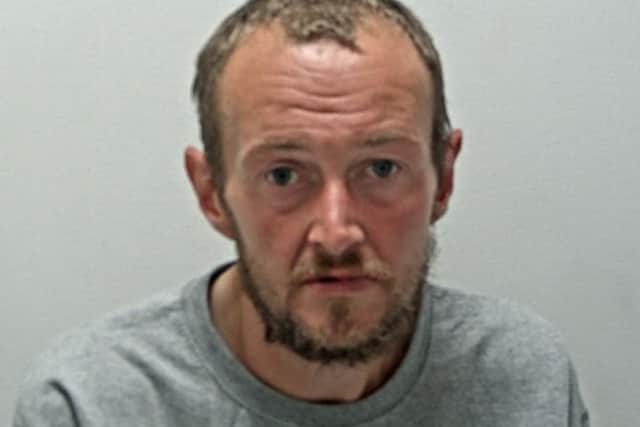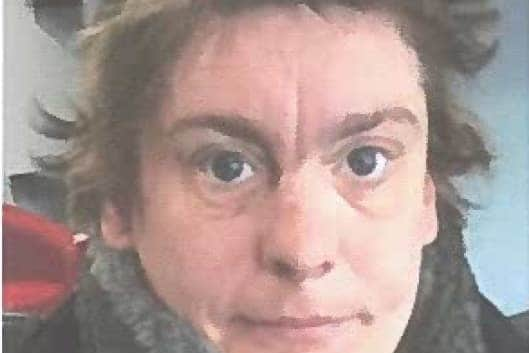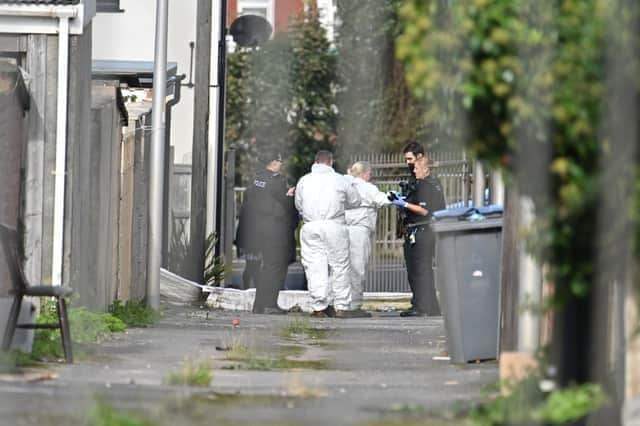Blackpool man planned to burn Alison Dodds' body after subjecting her to merciless beating
and live on Freeview channel 276
A violent drug addict who killed a vulnerable woman in his home in a “"prolonged and brutal attack" planned to burn her body.
Alexander Hindley, who subjected 51-year-old Alison Dodds to a merciless beating before going on the run for four days, was told he must serve almost 17 years before he is even considered for release.
Advertisement
Hide AdAdvertisement
Hide AdThe 35-year-old admitted murdering Ms Dodds at his flat in Redcar Road, Blackpool in September last year.
Judge Simon Medland KC told him his victim had been “physically and mentally vulnerable and fragile” when he carried out a ferocious assault on her and then covered her body up before fleeing.


“It must have taken you a considerable period of time, during which you punched, hit, smothered and strangled her,” he said.
“This was a prolonged and profoundly brutal attack.”
Advertisement
Hide AdAdvertisement
Hide AdThe court was told that Ms Dodds was found dead under a pile of blankets and duvets in Hindley’s flat one morning.
Two social workers called to tell her she had been accepted on to a rehabilitation programme to try and address her “long-standing difficulties with alcohol.”
Mr Peter Glenser KC, prosecuting, said: “She had been the victim of a violent, prolonged and sustained assault.”


He explained she had suffered both manual and ligature strangulation, she had multiple rib fractures, she had also sustained fractures of the face and cuts to both ears.
Advertisement
Hide AdAdvertisement
Hide AdBefore police arrived, Hindley called at the flat and was denied access because the social workers told him there was a body inside.
He told them that when he had left the flat earlier that morning Ms Dodds was in the company of two other people and she was “fine.”
Paramedics called to the scene found a number of injuries to her body. She was wearing a hooded top and photographs taken at the scene showed the hoodie was tightly tied around her neck along with the drawstring in the hood.
Consultant Home Office pathologist Dr Alison Armour said Ms Dodds had numerous injuries including being the victim of external compression force to her neck through manual and ligature strangulation. “This alone could have accounted for her death,” she said.
Advertisement
Hide AdAdvertisement
Hide AdShe had injuries to her nose, mouth, lips, gums and tongue, consistent with having force applied to her mouth in an act of being smothered. That too could have accounted for her death, she said.
And there was significant blunt force trauma to the chest with multiple rib fractures. They too could have accounted for her death.


“It is my opinion that this could be accounted for by an individual sitting astride her chest, leading to such rib fractures.
Dr Armour said there were other rib fractures which were probably caused by blunt impact trauma during an assault.
Advertisement
Hide AdAdvertisement
Hide AdMs Dodds also had fractures of the face caused, she thought, by a hard punch. And there were “unusual” injuries to both ears which could have been caused by a sharp object like a wire or a bladed weapon.
Dr Armour added that in her opinion the cause of death was a combination of extreme compression of the neck, smothering and blunt chest trauma.
During police enquiries to locate Hindley in the four days after the murder, they interviewed a woman who said she had seen him that morning in Egerton Road, Blackpool and he was asking her for drugs.
He told her there was a dead body of a man in his flat who had tried to hit him over the head and he had strangled him. He said he was intending to burn the body.
Advertisement
Hide AdAdvertisement
Hide AdBut around 75 minutes later she saw Hindley again who “seemed rushed” and said someone had found the body.


CCTV footage taken outside Hindley’s flat showed Ms Dodds had arrived at about 4:30pm the day before the murder and had not left. All the footage between then and when the body was discovered showed no-one entering or leaving the flat, other than Hindley.
He was eventually arrested in Cleveleys and was said to have told police: “I know what I’ve done.”
Later at the police station he claimed Ms Dodds had hit him “around the head with a bar.” But in four interviews he answered “no comment” to all questions.
Advertisement
Hide AdAdvertisement
Hide AdMr Glenser concluded by saying that there was no way of knowing what had happened between the two that day, only they knew and Ms Dodds was now dead.
The court heard Hindley’s previous record included several convictions for violence, robbery and possession of drugs. He admitted to having taken cannabis daily since he was 13.
Siobhan Grey KC, representing Hindley, said her client suffered from “complex mental health difficulties” in the build-up to the assault.
She said there had been a “steady decline” in his mental health over the year before he killed Ms Dodds. And according to experts he may have been suffering from post traumatic stress disorder (PTSD) brought on by people having taken over his flat to stay - a practice known as cuckooing.
Advertisement
Hide AdAdvertisement
Hide Ad“He was so terrified to go back to his own home that he was sleeping on the streets,” she said.
The relationship between Hindley and Ms Dodds seemed to be amicable, “but something must have changed.”
Before passing sentence Judge Medland told the court: “It is clear this must have taken a long time for the defendant to have inflicted all those injuries. It was appalling violence.
“It is inevitably a complex picture. But most people who have a range of symptoms (like Hindley's) don’t go on to commit violence like this.
Advertisement
Hide AdAdvertisement
Hide Ad“Part of the picture is the defendant’s prolonged unlawful substance abuse which has seriously affected his own mental stability.”
Addressing Hindley he said: “The careful investigation of the police and the detailed examination of Dr Armour has revealed the true (extent) of your violent brutality.
“The sentence for murder has been fixed by law, it is life imprisonment. It may be that you will never be released from this sentence. You will only be released when the Parole Board [decides] you can be safely managed in the community.
“I am required to set a minimum term before you are able to apply to the Parole Board. The starting point is 15 years, however I make it plain to you that the aggravating features in this case, particularly the circumstances of your actions on the day, lead me to a starting point of 21 years.”
Advertisement
Hide AdAdvertisement
Hide AdHe said he took into account Hindley’s mental health issues and reduced it to 20 years because of them. And because he had pleaded guilty, making a trial unnecessary, he had to give him one sixth credit, reducing the minimum time before applying for parole to 16 years and eight months.